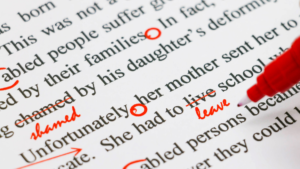My Own Experience
Four years ago during the 2016 Election, I was teaching AP Lang. We were right in the middle of the Rhetorical Analysis Essay/Unit. I watched live President Trump’s apology for the leaked video where he said that you should ‘grab women by the …” (video | text). Immediately I thought about President Clinton’s apology for the Monica Lewinsky scandal (video | text).
I decided that we needed to do a rhetorical analysis of these two apologies. The Clinton apology is often studied in the AP Lang curriculum, but the election gave me the perfect chance to teach political texts in real-time.
To say I was worried would be minimizing the anxiety I felt. You see, I teach in a conservative, mostly white, mostly Republican, upper-middle-class school.
And guess what … the lesson went amazing! No parent complaints. No phone calls or emails from the superintendent (she lived in the neighborhood and would contact teachers directly with complaints from her neighbors).
Here are my top 5 Tips for How to Teach Political Texts in English Class

1. What’s Your Rationale?
You need to have a strong objective and reason why. The lesson needs to be rooted in your standards and goals for the class. You can defend that to admin, students, parents, or maybe even the public.
The amazing thing about being English teachers is that we do not have to teach specific “content” or texts; we teach skills! Like analyzing. Like evaluating. Like rhetoric. Like argument. Like main ideas and details. Like citing the text in your analysis. There are so many standards we can use as our rationale.
You may not be asked the WHY the first time you teach something controversial. But I promise you will eventually.
And the next thing you need to do is communicate the why to your students. Be sure they know why you chose the political texts you chose.

2. Stay Objective
In a world and content area where we are judging, evaluating, and analyzing all day long, it is hard to stay objective about the content of political speeches.
One way you can do this is to not state opinions – only facts. In this instance you become a formalist in your analysis – you only look at what it in the text itself.
I linked the videos above as well as the texts of what I call the “Presidential Apology Speeches”; however, I didn’t show the videos until after we were done with the text analysis. We talked about how video changed our opinions of the sincerity of the two speeches.
By sticking to what is in the text, not what new commentators say (or any other opinions), you can focus class discussion on being objective as well.

3. Politically – You are Switzerland
This may be the most important tip I have. You can’t let your students know what political party you affiliate with. Students can and will catch any hint of bias you have. And if they know or even suspect this, they will not hear the lesson you are actually trying to teach.
Throughout that whole election cycle, my students wanted to know who I was going to vote for. They would guess and tease and try to trick me up. They were completely wrong – by the way.

4. Pair Texts Together
The more politically charged the text, the more important it is that you find an example from the opposing political party. This practice helps you stay objective and not let students know your personal beliefs. Critiquing only one side will backfire.
After years of being a debate coach, I default to examining and presenting two sides of an argument. Even middle school debate topics are very controversial. In elections, almost every debate connects to the election – even the extemporaneous speeches.

5. Set up Classroom Norms for Discussion
This last tip isn’t something that you can really set up in the moment. It is the class culture you develop over many months and building positive relationships with your students. It also means that you have to follow those same rules of respect.
I had a saying in my class, “We don’t attack people, we attack ideas.” As a debate coach, we would frequently hold impromptu debates every time I saw that students were highly engaged, opinionated, and divided on a topic in class. Every-single-time I would review our debate rules and make every student in my class repeat this golden rule.
Trust Your Students
In the end, believe that your students will be thoughtful in their analysis of the texts you choose because you have set them up to be successful by teaching them critical analysis skills and communication.
In my own experience with the Trump and Clinton speeches, my class ended up coming to the same conclusion in their rhetorical analysis of each text. Personal opinion didn’t factor into it.
Ultimately I want my students to be able to leave my class, hear things on the news or read them, and be thoughtful and critical so that they can make up their own minds rather than being told what to think.
You can teach political texts in class – even if they are controversial. Be brave and try it out.
Check out my blog post full of resources for teaching Amanda Gorman’s poem “The Hill We Climb” that was read at the inauguration of President Biden. Amanda’s poem is one way to teach political texts in your own classroom.




